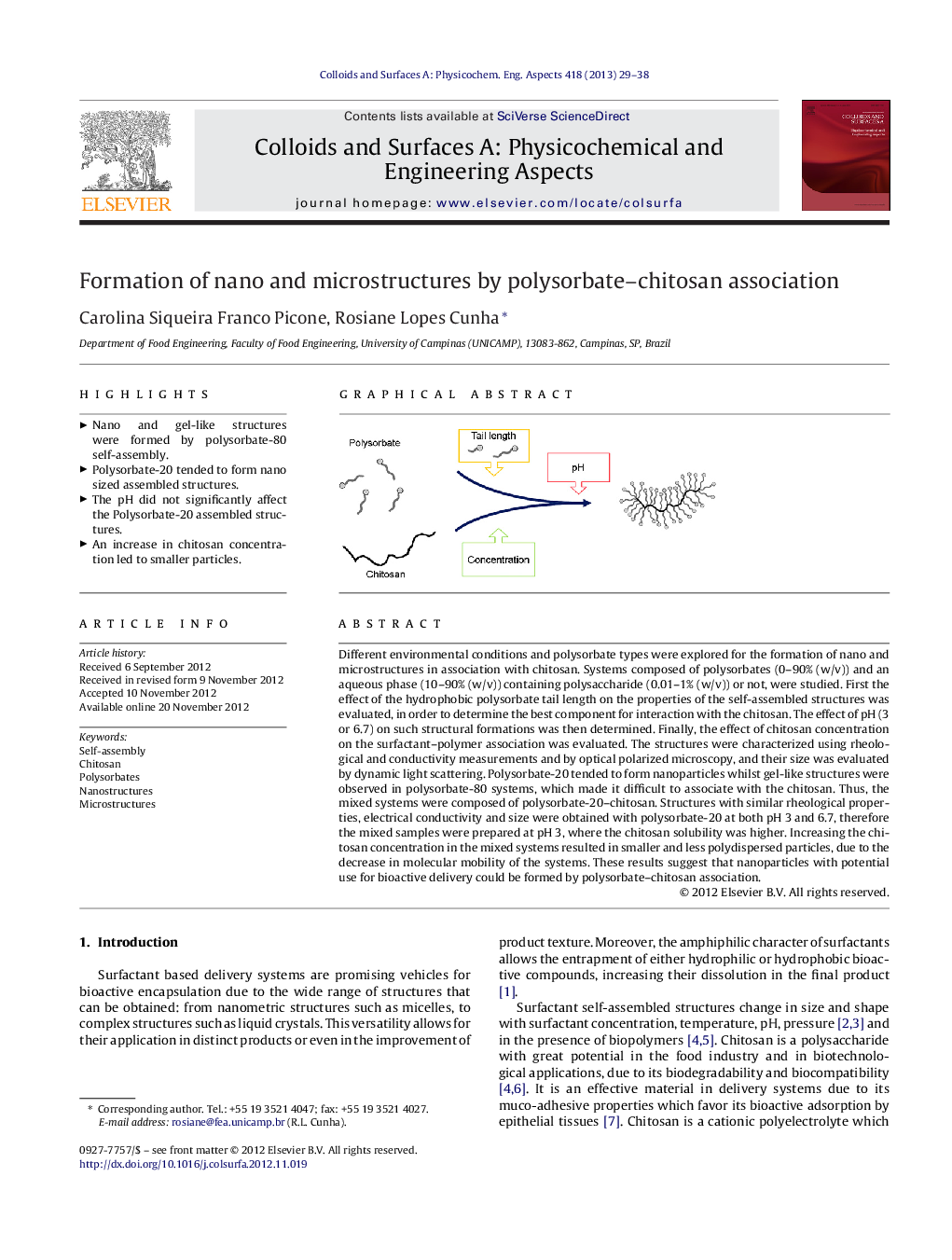| Article ID | Journal | Published Year | Pages | File Type |
|---|---|---|---|---|
| 593847 | Colloids and Surfaces A: Physicochemical and Engineering Aspects | 2013 | 10 Pages |
Different environmental conditions and polysorbate types were explored for the formation of nano and microstructures in association with chitosan. Systems composed of polysorbates (0–90% (w/v)) and an aqueous phase (10–90% (w/v)) containing polysaccharide (0.01–1% (w/v)) or not, were studied. First the effect of the hydrophobic polysorbate tail length on the properties of the self-assembled structures was evaluated, in order to determine the best component for interaction with the chitosan. The effect of pH (3 or 6.7) on such structural formations was then determined. Finally, the effect of chitosan concentration on the surfactant–polymer association was evaluated. The structures were characterized using rheological and conductivity measurements and by optical polarized microscopy, and their size was evaluated by dynamic light scattering. Polysorbate-20 tended to form nanoparticles whilst gel-like structures were observed in polysorbate-80 systems, which made it difficult to associate with the chitosan. Thus, the mixed systems were composed of polysorbate-20–chitosan. Structures with similar rheological properties, electrical conductivity and size were obtained with polysorbate-20 at both pH 3 and 6.7, therefore the mixed samples were prepared at pH 3, where the chitosan solubility was higher. Increasing the chitosan concentration in the mixed systems resulted in smaller and less polydispersed particles, due to the decrease in molecular mobility of the systems. These results suggest that nanoparticles with potential use for bioactive delivery could be formed by polysorbate–chitosan association.
Graphical abstractFigure optionsDownload full-size imageDownload as PowerPoint slideHighlights► Nano and gel-like structures were formed by polysorbate-80 self-assembly. ► Polysorbate-20 tended to form nano sized assembled structures. ► The pH did not significantly affect the Polysorbate-20 assembled structures. ► An increase in chitosan concentration led to smaller particles.
